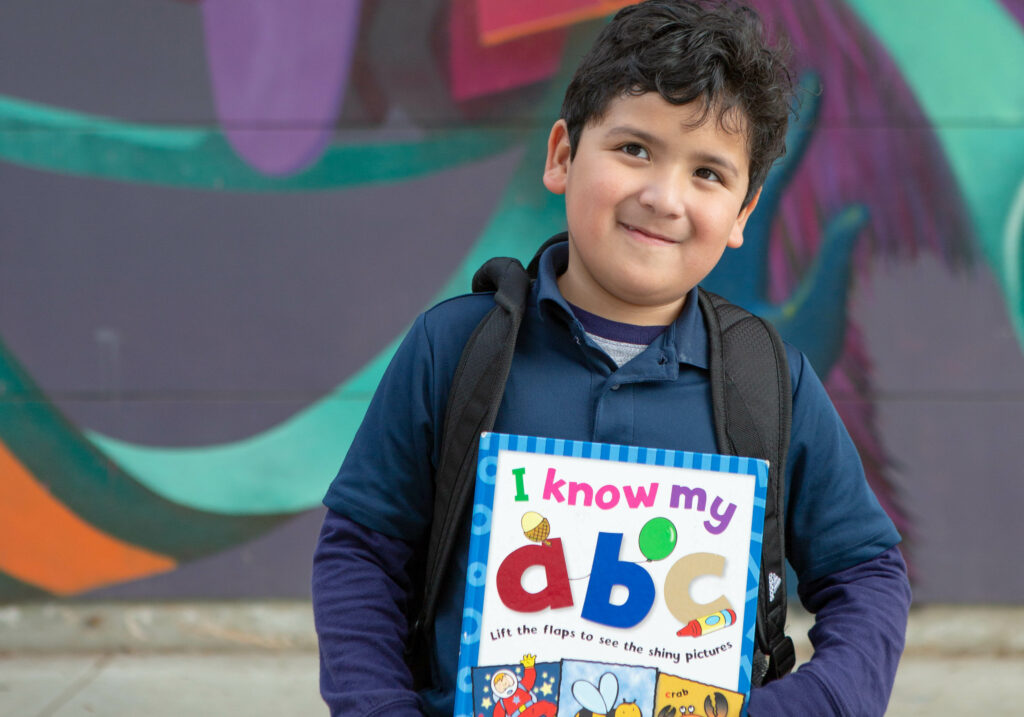
Credit: Allison Shelley for American Education
Legislators and advocates representing diverse perspectives have long hoped for a law to address literacy rates and equity gaps in California.
These hopes, and their years of hard work, were rewarded when the governor signed Assembly Bill 1454, a bill that passed through both legislative chambers with unanimous votes. The new law represents a crucial step forward in addressing literacy concerns. The bill has been described in the media as California’s new “science of reading” bill, but this shorthand fails to accurately reflect the legislation’s comprehensive scope and intention.
Let’s be clear, AB 1454 is not about narrowing literacy instruction to one approach. Rather, it’s about realizing California’s long-standing, comprehensive vision for literacy that meets the needs of all students — including our state’s 1.1 million English learners.
Phonics and foundational skills are essential for teaching students to read, and they always have been. But effective literacy instruction is not just about sounding out words. Children also need strong oral language, vocabulary, background knowledge, writing and comprehension skills to thrive as readers.
AB 1454 accounts for this reality. At its core, it aligns with California’s English Language Arts/English Language Development (ELA/ELD) Framework, adopted in 2014. This framework is nationally recognized for weaving together multiple strands of research — including phonics and decoding — alongside research on how children learn a second language, how their home language knowledge supports English learning, and how their cultures and life experiences shape how they use and understand language.
AB 1454 advances California’s literacy vision in three key ways:
Teacher preparation: The legislation ensures that teachers, specialists and administrators are trained in instruction aligned with the ELA/ELD Framework—including preparation to support literacy instruction in English learners’ primary languages.
Instructional materials: It directs the State Board of Education to adopt new textbooks and other teaching materials that include high-quality resources in students’ home languages, ensuring teachers can build on students’ existing language skills.
Professional development: AB 1454 funds training that equips educators to teach phonics and foundational skills while also supporting oral language, vocabulary, writing, comprehension and background knowledge — with additional support for English learners, students with reading challenges and those with special needs.
Together, these provisions reaffirm the legislation’s intent: that literacy instruction should be comprehensive, evidence-based and grounded in the recognition that students’ home languages are powerful assets for learning.
Since its adoption, the ELA/ELD Framework has anchored California’s literacy vision. Every major initiative since has reinforced it, including AB 1454.
SB 488 (2021) reshaped teacher preparation standards, requiring programs to integrate the framework’s cross-cutting themes — foundational skills, meaning making, language development, effective expression and content knowledge. This legislation also established new Literacy Performance Assessments to ensure candidates can teach in accordance with these standards.
Gov. Gavin Newsom’s Golden State Literacy Plan (2025) builds directly on the framework, deploying literacy coaches statewide, funding instructional materials, and supporting early language development and teacher preparation. The plan also highlights the Literacy Roadmap Content Blocks, grade-level guidance that helps teachers integrate foundational skills, language development, comprehension, and writing in ways that are sequenced, research-based and responsive to student needs.
At the same time, the governor’s budget makes significant investments in professional learning and instructional materials. Since decisions about how these funds are used are made locally, districts have a powerful opportunity to serve linguistically diverse communities by supporting their students’ unique language and literacy needs. This one-time funding can provide teachers with both designated and integrated English language development support, ensuring literacy instruction addresses the full range of the ELA/ELD Framework. Seizing this moment means centering English learners — supporting them in gaining English proficiency while also fostering proficiency in their home language.
Nearly 20% of California’s students are English learners. For these learners, effective literacy goes beyond decoding words. It’s about making meaning, connecting ideas and building on what they already know in their home language.
Research shows literacy skills transfer across languages and that students’ cultural backgrounds shape how they learn. AB 1454, together with SB 488, the Golden State Literacy Plan, and the Literacy Roadmap, ensures these realities are not an afterthought but central to how California approaches literacy.
AB 1454 represents compromise, collaboration and fidelity to what works. It reaffirms California’s commitment to an expansive, inclusive and evidence-informed literacy vision. For Californians Together and our partners, this is a milestone worth celebrating.
As the bill is implemented, let’s not reduce it to a headline about the “Science of Reading.” Instead, let’s recognize it for what it truly is: an affirmation of California’s comprehensive, inclusive and evidence-based vision for literacy — and a rare opportunity to invest in the success of English learners.
•••
Martha Hernández is the executive director of Californians Together, a nonprofit that focuses on the success of English- and dual-language learners. She has decades of direct professional experience in public education.
The opinions expressed in this commentary represent those of the author. EdSource welcomes commentaries representing diverse points of view. If you would like to submit a commentary, please review our guidelines and contact us.
